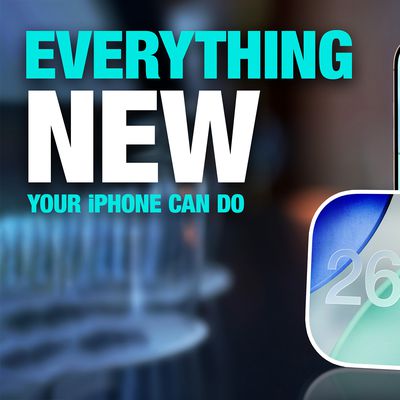Financial Times Won't Give Apple A Cut, Drops iOS for Web App
The Financial Times, a major business newspaper, has decided to drop its iOS app in favor of an HTML5 based web app specifically designed for the iPhone and iPad. The move is in response to Apple's new App Store Subscription requirements that state Apple must get a 30% cut of any subscription sold on iTunes and that publications must offer subscriptions through the App Store.

In a email to subscribers today, the FT didn't mention the App Store at all, instead touting "valuable improvements" including claims that the web app will be faster and more up-to-date. The interesting part came when the email mentioned the existing app (emphasis added):
Although the old app may still be available for an interim period, we encourage you to switch to the new app as soon as possible. The new app is now the focus of our development efforts and we'll be adding a series of new features, including special reports, over the coming months.
Actually, neither the Financial Times nor anyone else knows what is going to happen at the end of the month to subscription-based apps that don't align with Apple's App Store guidelines. The deadline for subscription based apps to roll out their offerings is June 30. Quoted in the New York Times, Rob Grimshaw, managing director of FT.com said:
We don't quite know what will happen ... we'd love to keep our app in iTunes, but it may be that they will block our app at the end of the month.
They might not know what's going to happen if they don't play ball, but it's Apple's sandbox and the FT isn't sitting around idly. The new web app seems to be very similar to the current iOS App and thus may be able to provide a very similar experience without having to share revenue with Apple. The Financial Times' loyal readership is likely to follow the publication to its web app in significant numbers, meaning that the FT may not be missing out on much by bypassing iTunes.
As the first major publication to drop its iOS app over Apple's subscription guidelines, the FT might just encourage other publications to make the same move. Ben Evans notes, however, that the grass isn't always greener on the other side:
The challenge for other publishers in following the FT is that by doing so, they gain 30% but lose frictionless installs from the app store and frictionless payment from iTunes. For the FT, with a dedicated readership willing to pay, it may be worth giving those things up in exchange for the ability to offer a true cross-platform experience. But if you're depending on impulse download, the tablet experience and the ease of payment to get people to pay for your product where they never paid before, paying Apple 30% of something may be better than keeping 100% of nothing.
Popular Stories
Apple has ordered 22 million OLED panels from Samsung Display for the first foldable iPhone, signaling a significantly larger production target than the display industry had previously anticipated, ET News reports.
In the now-seemingly deleted report, ET News claimed that Samsung plans to mass-produce 11 million inward-folding OLED displays for Apple next year, as well as 11 million...
Google Maps on iOS quietly gained a new feature recently that automatically recognizes where you've parked your vehicle and saves the location for you.
Announced on LinkedIn by Rio Akasaka, Google Maps' senior product manager, the new feature auto-detects your parked location even if you don't use the parking pin function, saves it for up to 48 hours, and then automatically removes it once...
Apple is about to release iOS 26.2, the second major point update for iPhones since iOS 26 was rolled out in September, and there are at least 15 notable changes and improvements worth checking out. We've rounded them up below.
Apple is expected to roll out iOS 26.2 to compatible devices sometime between December 8 and December 16. When the update drops, you can check Apple's servers for the ...
Apple is actively testing under-screen Face ID for next year's iPhone 18 Pro models using a special "spliced micro-transparent glass" window built into the display, claims a Chinese leaker.
According to "Smart Pikachu," a Weibo account that has previously shared accurate supply-chain details on Chinese Android hardware, Apple is testing the special glass as a way to let the TrueDepth...
Apple today seeded the second release candidate version of iOS 26.2 to developers and public beta testers, with the software coming one week after Apple seeded the first RC. The release candidate represents the final version iOS 26.2 that will be provided to the public if no further bugs are found.
Registered developers and public beta testers can download the betas from the Settings app on...
Apple's iPhone development roadmap runs several years into the future and the company is continually working with suppliers on several successive iPhone models at the same time, which is why we often get rumored features months ahead of launch. The iPhone 18 series is no different, and we already have a good idea of what to expect for the iPhone 18 Pro and iPhone 18 Pro Max.
One thing worth...
Apple's chipmaking chief Johny Srouji has reportedly indicated that he plans to continue working for the company for the foreseeable future.
"I love my team, and I love my job at Apple, and I don't plan on leaving anytime soon," said Srouji, in a memo obtained by Bloomberg's Mark Gurman.
Here is Srouji's full memo, as shared by Bloomberg:I know you've been reading all kind of rumors and...
Apple seeded the second iOS 26.2 Release Candidate to developers earlier this week, meaning the update will be released to the general public very soon.
Apple confirmed iOS 26.2 would be released in December, but it did not provide a specific date. We expect the update to be released by early next week.
iOS 26.2 includes a handful of new features and changes on the iPhone, such as a new...
Apple and Google are teaming up to make it easier for users to switch between iPhone and Android smartphones, according to 9to5Google. There is a new Android Canary build available today that simplifies data transfer between two smartphones, and Apple is going to implement the functionality in an upcoming iOS 26 beta.
Apple already has a Move to iOS app for transferring data from an Android...
Wednesday December 10, 2025 12:22 pm PST by
Juli CloverThe next-generation low-cost iPad will use Apple's A19 chip, according to a report from Macworld. Macworld claims to have seen an "internal Apple code document" with information about the 2026 iPad lineup.
Prior documentation discovered by MacRumors suggested that the iPad 12 would be equipped with an A18 chip, not an A19 chip. The A19 chip was just released this year in the iPhone 17, and...

























